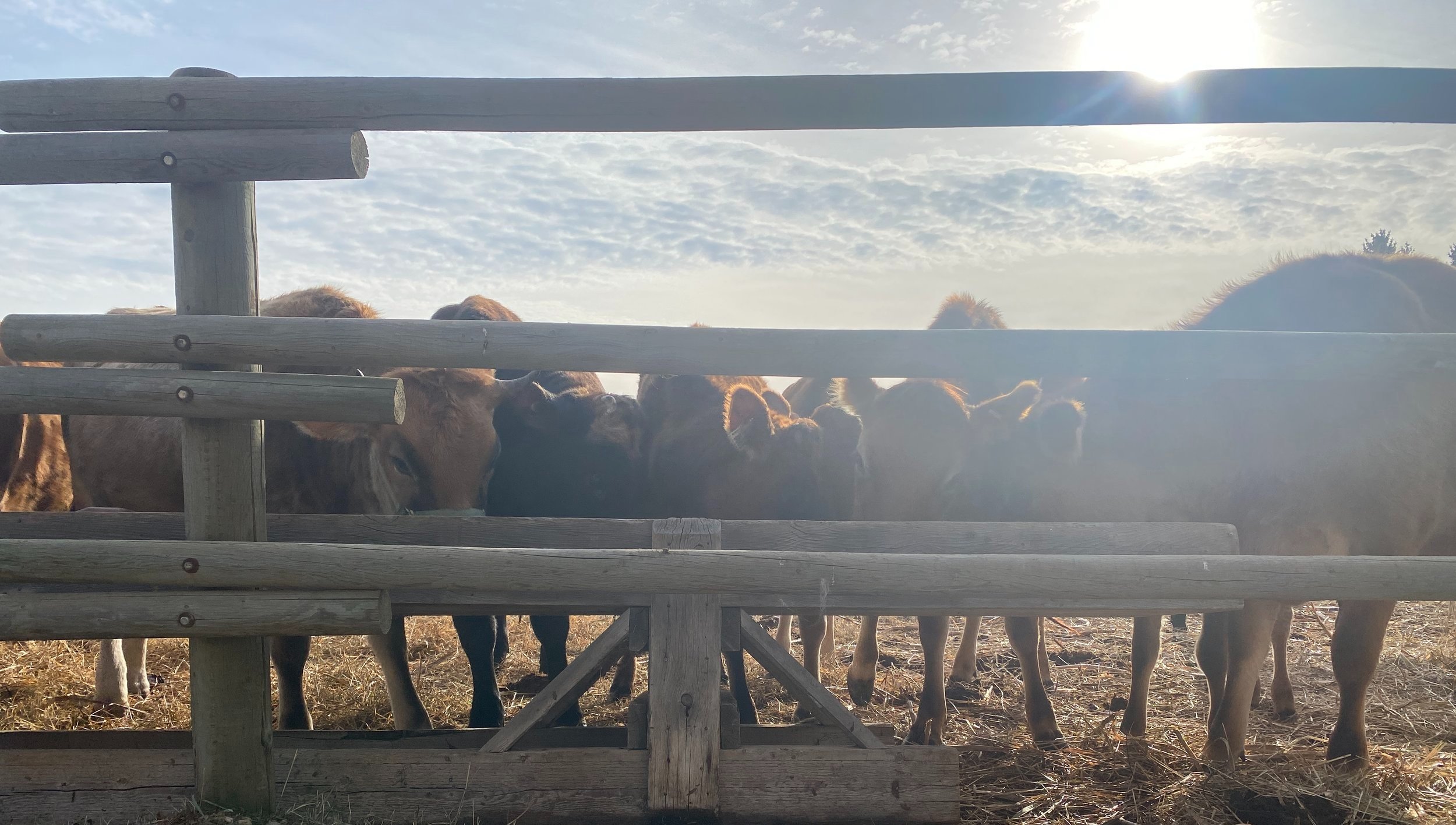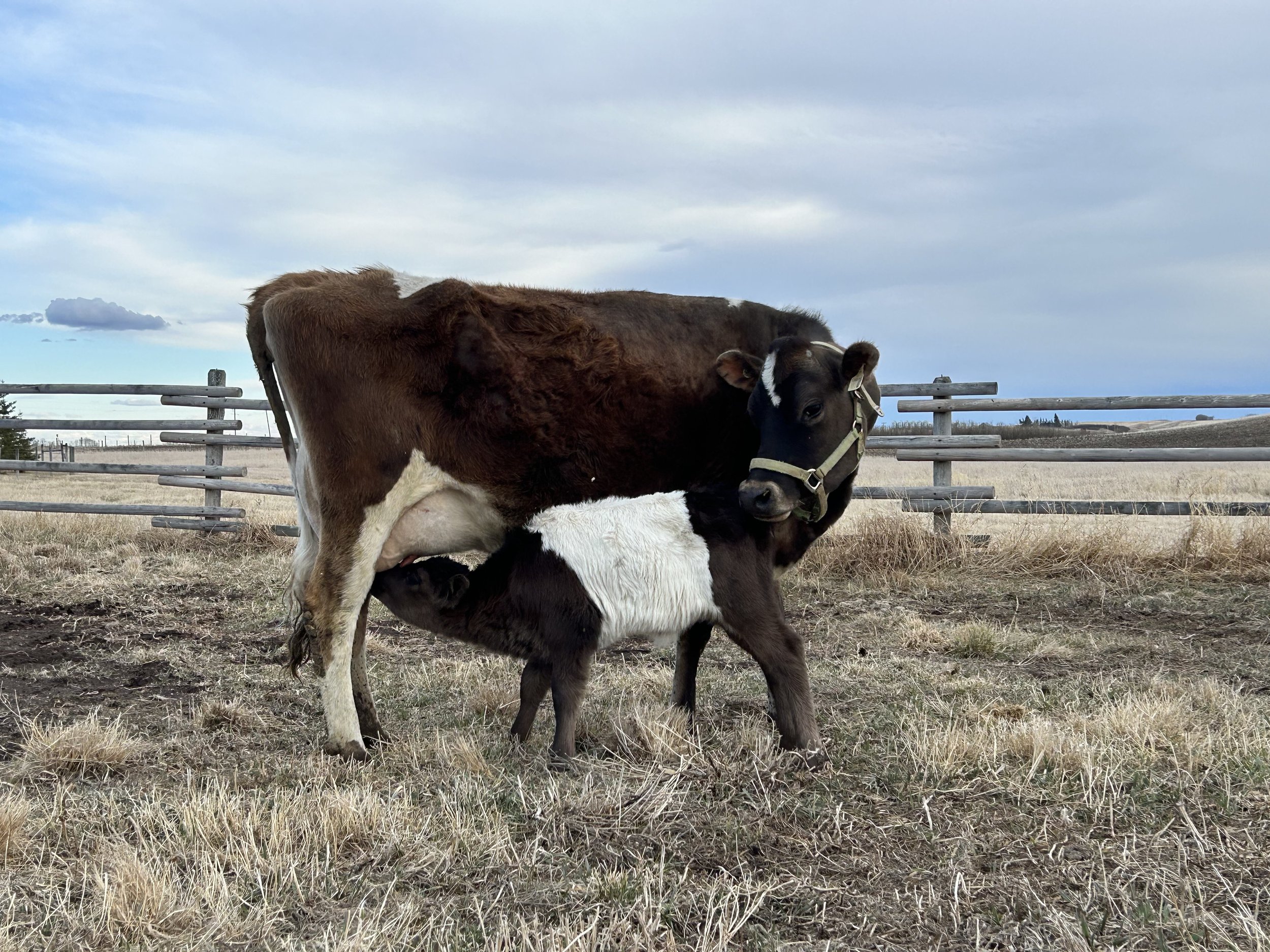
A2/A2 and Genetic Testing
Here is where you can find where we get our genetic testing pregnancy testing done, and some information on the A2/A2 beta casein.
Neogen Genomics
Right from our first cow, we have taken tissue samples and sent them to Neogen Genomics for genetic testing. For my cows, I use their Igenity® Essential product. For bulls, their Igenity® Select product works for testing. All we need to do is use their tissue sampling gun to get a sample that we can mail to Neogen for testing. From the date of mailing the sample, I usually get my results within a month. We also offer this service to anyone not wanting to purchase the supplies but willing to drive their cow to our farm.
Livestock Veterinary Services
Livestock Veterinary Services offers a wide range of lab services, but our favourite to utilize is their Bio-PRYN blood pregnancy test. When selling cows, I like to have a third party verify our cows’ pregnancies. The test just requires mailing a small blood sample to their lab along with a diagnostic test form. Samples should be collected at least 28 days post-breeding. We also offer a free pregnancy test for anyone boarding our cows with us for at least 28 days after breeding.
“A1 and A2 Genetics
For much of the following information I am indebted to Devil in the Milk by Keith Woodford (Chelsea Green Publishing, 2010).
It has long been known that casein, an important milk protein, exists in varying forms known as alpha, beta, and kappa. All of these forms are present in the milk of any cow. However, there are a few slightly different forms of beta-casein, with the most important being those known as Al and A2 beta-casein. In 1993 a researcher in New Zealand, a major dairying country, made the observation that the incidence of type 1 diabetes among Samoan children living in New Zealand was tenfold higher than among children in Samoa. Researchers realized that the major difference between the two populations was the amount of milk in their diet. Subsequently researchers found that the rates of heart disease and diabetes were many times higher in countries where the majority of cows express beta-casein in the Al form. Active research soon followed, with an emphasis on patenting a reliable test to identify the genes for Al and A2.
Beta-casein is formed from a chain of 209 amino acids. Al and A2 differ by only one amino acid. In the A1 sequence, histidine is found in position 67, immediately following isoleucine at position 66; the chemical bond between these two amino acids is weak. In the A2 sequence, proline is found in position 67, and it makes a strong bond with the neighboring isoleucine…”
“During digestion, enzymes readily break apart the weak histidine-isoleucine bond in A1 beta-casein, releasing a peptide (protein fragment) called beta-casomorphin-7 (BCM7). BCM7 is an opioid, a member of the morphine family, and is well recognized to have narcotic properties. It is not released during digestion of A2 milk. In susceptible individuals BCM7 is capable of causing a wide range of intolerance symptoms, including bloating, constipation, and nausea. All of these are believed to arise from BCM7 attaching to receptors in the intestines that control the peristaltic movement of food through the intestines. This is also a well-known effect of some other opioids such as codeine, so it should come as no surprise.
What is even more problematic is that, in the condition known as leaky gut, BCM7 may enter the bloodstream. Leaky gut, more formally known as permeable intestine, is a chronic condition in some people and an intermittent condition in others. The gut of newborn mammals, including humans, is always leaky until a sufficient amount of colostrum has been ingested. The gut of those suffering from Crohn's disease is chronically leaky. During a severe bout of diarrhea anyone's gut may become temporarily permeable. Once in the bloodstream, BCM7 has been shown in rodent studies to attach to opioid receptors, where it causes psychological symptoms similar to autism and schizophrenia. The symptoms are reversed in the presence of naloxone, a well-known morphine antagonist, thus proving the presence of an opioid.
Opioids have been known for a hundred years to affect immune function, possibly explaining the association of BCM7 with numerous autoimmune diseases. BCM7 is an oxidant. It oxidizes LDL cholesterol, a factor in heart disease. Wherever it attaches, BCM7 leads to inflammation, which may explain its association with type 1 diabetes, supposing that it reaches sites in the pancreas. Inflammation is thought to be the initial agent in a great many diseases and disorders and has many causes besides BCM7 from A1 milk. Nonetheless, the evidence against A1 milk is increasingly robust.
Where A2 milk is so labeled, as is the case for some milk in Australia and New Zealand, purchasers often express their gratitude for being able to drink this milk without distress. The issue with A1 milk is entirely distinct from lactose intolerance or classic food allergy. Many people who believe themselves to be lactose intolerant find that they can drink A2 milk. It turns out that the real culprit behind their intolerance of milk may have been not lactose but A1 beta-casein. Alternatively, it may have been due to the BCM7 from the A1 beta-casein slowing down the passage of food in the intestines, and hence giving more time for lactose fermentation.
No genetic engineering or gene splicing would be required to eliminate the A1 variant (or allele) from the national herd. Simple old-fashioned selective breeding would do it. Cows are either homozygous (pure A1 or pure A2) or heterozygous (carrying genes for both forms, in which case their milk is a mixture of Al and A2). Nearly all Guernsey cows are A2, and many Jerseys are A2; black-and-white cattle are often A1. However, there are too many exceptions for cow color to be of predictive value. All Asian and African cattle that have not interbred with northern European breeds give A2 milk, as do all goats, sheep, yaks, camels, buffalo, and also humans. Three or four generations of using only A2 bulls would virtually eliminate A1 cows…”
“Milk is a uniquely valuable food. For millions of people milk is the most consistently available high-quality protein food. Although most people, thanks to a healthy digestive system, are probably unaffected by Al milk, for some it would appear to be a problem of no small significance. Since breeding away from Al cows is a straightforward matter, why not do it? After initial enthusiasm for pursuit of research on the A1/A2 factor, which has the potential to greatly expand its consumer base, the dairy industry has chosen to dismiss discussion. Keith Woodford informs us that in New Zealand, which is the world's largest trader in dairy products, herds are quietly being bred away from A1 cows. In Australia, "A2 milk" (i.e., milk in which all the beta-casein is of the A2 form) is now available in all major supermarkets across the nation. A2 milk is also now available in Britain.”
The A2/A2 Beta Casein
I was skeptical at first of the information I was hearing about different beta caseins in milk, but just from hearing the testimonials of friends that were completely intolerant to any milk products, including raw milk, and then switching to A2/A2 raw milk and being able to drink it was reason enough for me to look further into it. The best description I’ve found on the research into the A2/A2 beta casein is found in a section of Joann S. Grohman’s “Keeping a Family Cow.” The following is that excerpt:


